
-
Before diving into the nitty gritty of shoe sizing, it helps to be familiar with footwear terminology. Most shoes and boots are constructed with four major components: upper, insole, midsole and outsole. We do our best to provide accurate information about these components in all of our product descriptions. The diagram below shows the major shoe components:

Shoe Upper
An upper is the exterior structure of a shoe or boot. It’s basically the part of a shoe that covers the top and sides of your foot. Popular materials for making shoe uppers include: leather, suede, synthetic leather, mesh, canvas and rubber. A shoe upper may be formed of several subcomponents, including:
- Toe: The foremost part of a shoe’s upper, which covers the toes.
- Vamp: The part of a shoe’s upper that covers the forefoot.
- Tongue: A flap of material that is positioned underneath the laces.
- Eyelets: The holes or grommets that hold the laces.
- Quarter: The rearmost part of a shoe’s upper, which sits above the heel.
- Collar: The topmost portion of the upper that surrounds the ankle.
- Welt: A stitched or bonded seam that attaches the upper to the outsole.
Insole
The insole is a soft, pliable sheet of material that is placed inside shoes in order to provide additional cushioning and comfort. Insoles are usually removable, so they may be replaced with a different insole for more or less cushioning, or added arch support. A non-removable insole is usually referred to as a footbed.
Midsole
Located in between the insole and outsole, the midsole is usually a thick, spongy layer designed to provide cushioning and shock absorption. Unlike the insole, the midsole is typically bonded to the outsole and is not removable. Many athletic shoes and sneakers have a lightweight EVA (ethyl vinyl acetate) midsole. More rugged shoes and boots may have a polyurethane midsole.
Outsole and Heel
In the footwear industry, the sole of a shoe is usually called an outsole. The outsole is the bottom portion of a shoe that contacts the ground. Synthetic rubber is the most common outsole material because it provides good traction and durability. Most outsoles also have some kind of tread pattern or texture that provides additional traction on slick surfaces. The heel of a shoe can be part of the outsole or a separate piece of material, depending on the construction.
Shank
Usually made of steel, molded nylon or composite, a shank is a semi-stiff piece of material inserted in between the outsole and midsole for additional stability. Some types of work boots include a metal shank for added protection from punctures. Heavy-duty hiking boots may include a nylon or composite shank for added torsional stability.
-
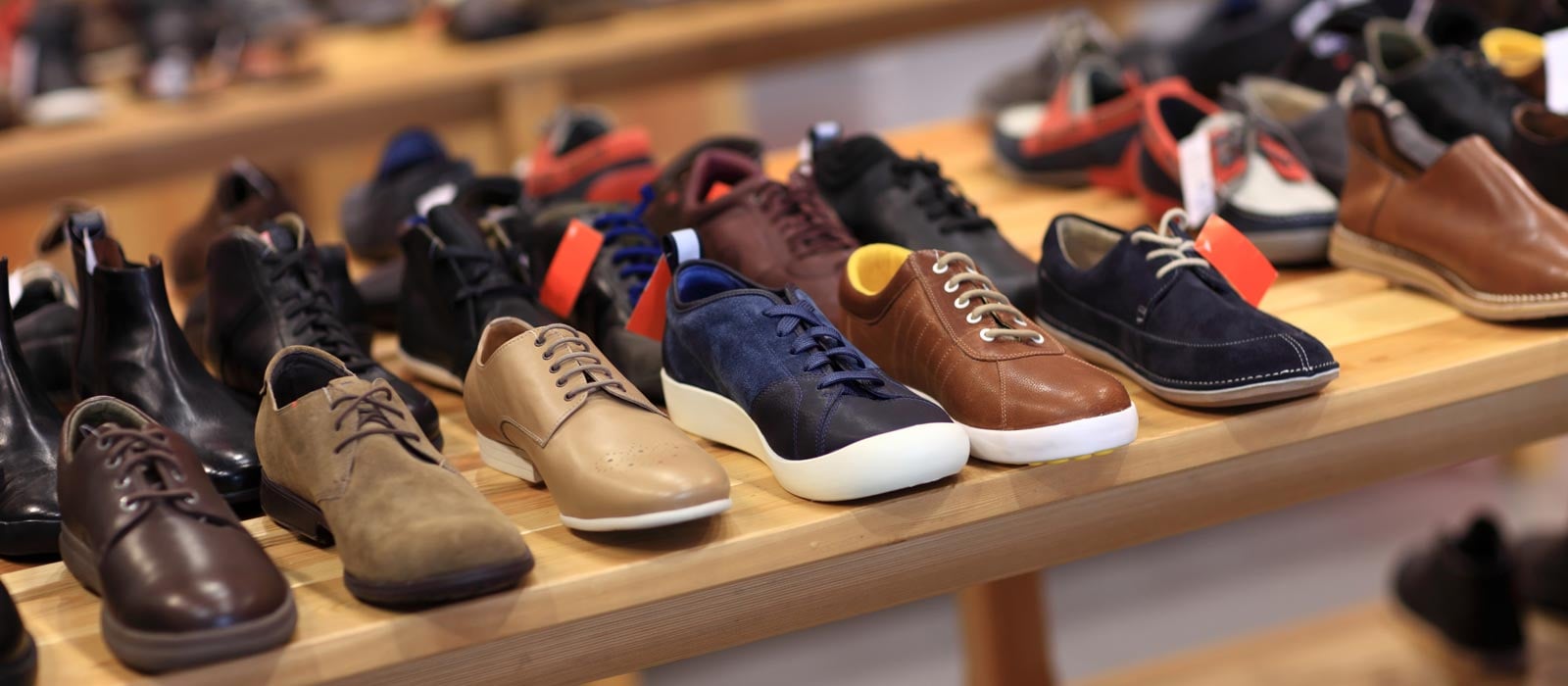
Before you start buying footwear, you’ll need to know your size. Many people already know their size. However, did you know that some adults’ feet can actually continue to grow larger over time? Feet can also become wider as they flatten out. Although this process is very slow, some people can eventually increase in shoe size or width. If you haven’t bought shoes in a long time or you’ve noticed that some of your old pairs are feeling snug, it’s not a bad idea to double check your measurements. Of course, if you’re buying shoes for a child, having a current measurement is even more important, since kids’ feet continue to grow until they reach adulthood.
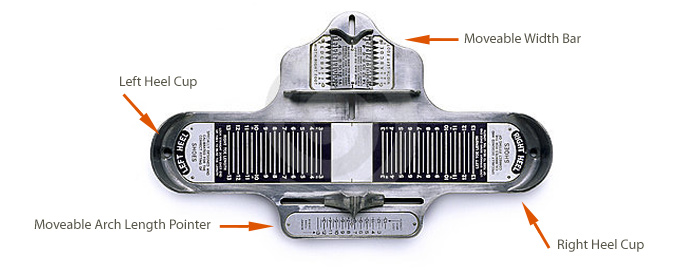
Curious about how to measure shoe size? There is actually a tool designed specifically for the job. A Brannock Device (pictured above) is the best way to measure the length and width of feet. Many people have already seen one at their local shoe store, and many footwear stores leave Brannock Devices on the sales floor for customer use. Don’t want to visit a shoe store? No problem. You can measure your feet at home with one of our three printable templates (just be sure to print at 100% scale using standard 8.5x11” paper):
Heel-to-Toe Size
While standing up or sitting down with your feet flat on the floor, place one heel at the appropriately labeled end of the Brannock Device template. (One side is for your left heel and the other side is for your right heel). Make sure the back of your heel doesn’t overlap the curved end of the Brannock Device on the template. Wherever your longest toe falls on the template is your heel-to-toe size.
Forefoot Width
Next, use a pen or pencil to mark your forefoot width. Higher letters indicate a wider foot. Check out the "Shoe Width Explained" section for more details on width sizes.
Determining Your Shoe Size
Before you determine your shoe size and width, it’s a good idea to measure both feet (just remember to rotate the Brannock Device template 180 degrees when you measure the other foot). If you find that one foot is half a size larger than the other, for example, it’s usually best to go with the larger size. Keep in mind that some shoes are only available in whole sizes. If you’re a size 10.5 and you must choose between a size 10 and a size 11, most people will prefer the larger size. Also, not all shoes are available in multiple widths, but it’s still a good idea to know your foot width, just in case you have the option to choose. People with very wide feet may prefer to only buy shoes that are available in wider sizes, since shoes that are too narrow can cause discomfort and other issues.
-
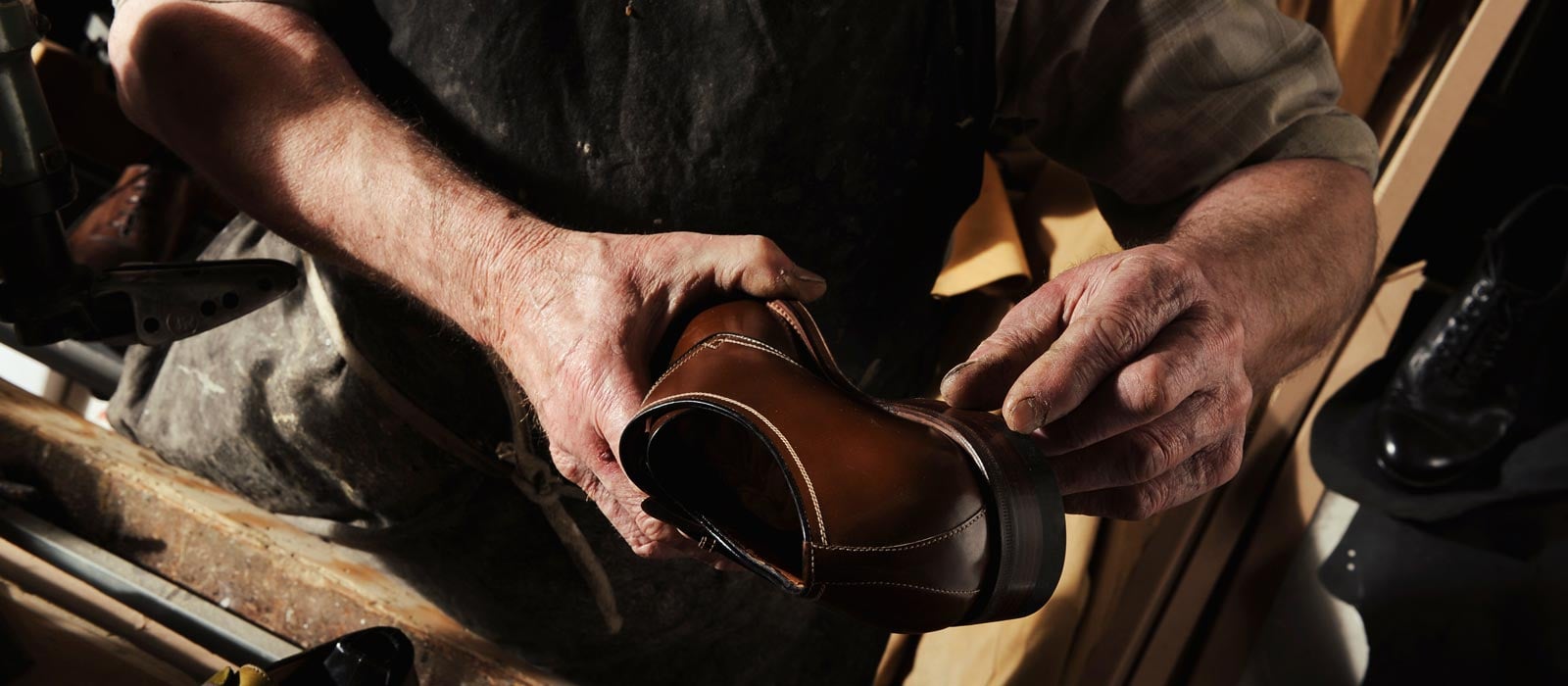
The way shoes are made can affect how they will fit. As you probably know, the majority of today’s shoes are mass-produced in footwear factories. Of course, even mass-produced shoes have at least some hand-assembly involved. Different factories also use slightly different equipment, materials and construction methods to create shoes, boots and sandals. Some types of footwear can require more than 100 different production steps. Ever wonder how your favorite pair of sneakers was made? Here’s a quick rundown of the process many manufacturers use to produce athletic shoes and sneakers:
- First, a process called die-cutting is used to create the individual parts of a shoe’s upper, which may be cut from leather, fabric or another pliable material. The pieces are usually stamped out by a large machine press (kind of like an industrial-sized cookie cutter), which cuts many pieces at the same time.
- Next, these pieces are stitched or bonded together to form the shoe’s upper. At this point, the shoe still looks like a flat piece of material. A fabric base or liner is then sewn into the upper, and the shoe begins to take shape.
- The shoe upper and liner are now pulled snugly over a foot-shaped mold, called a last, which will help create the final shape of the shoe. The shoe upper may be heated to assist with this molding process.
- Another machine is used to heat and bond a pre-cut midsole and outsole together, forming the base of the shoe. Using pressure and a bonding agent, such as cement, the upper (which is still stretched over the last) is adhered to the midsole and outsole. Stitching may also be used to create a welt for added durability.
- The finished shoe is removed from the last and inspected for defects. Finally, laces are added and the new shoes are boxed up for shipping.
In a nutshell, the exact size and shape of a shoe’s last will determine the final shape (and fit) of the shoe. Therefore, a size 10 shoe last at one factory may provide a slightly different fit than a size 10 last at another factory. This is a common reason for small variations in fit between different footwear brands. Usually, these variations are small and don’t cause any fit issues. Occasionally, however, a pair of shoes may have too much variation, resulting in a fit that’s either too small or too large. Check out the next section to learn more about how we deal with these sizing variations.
-
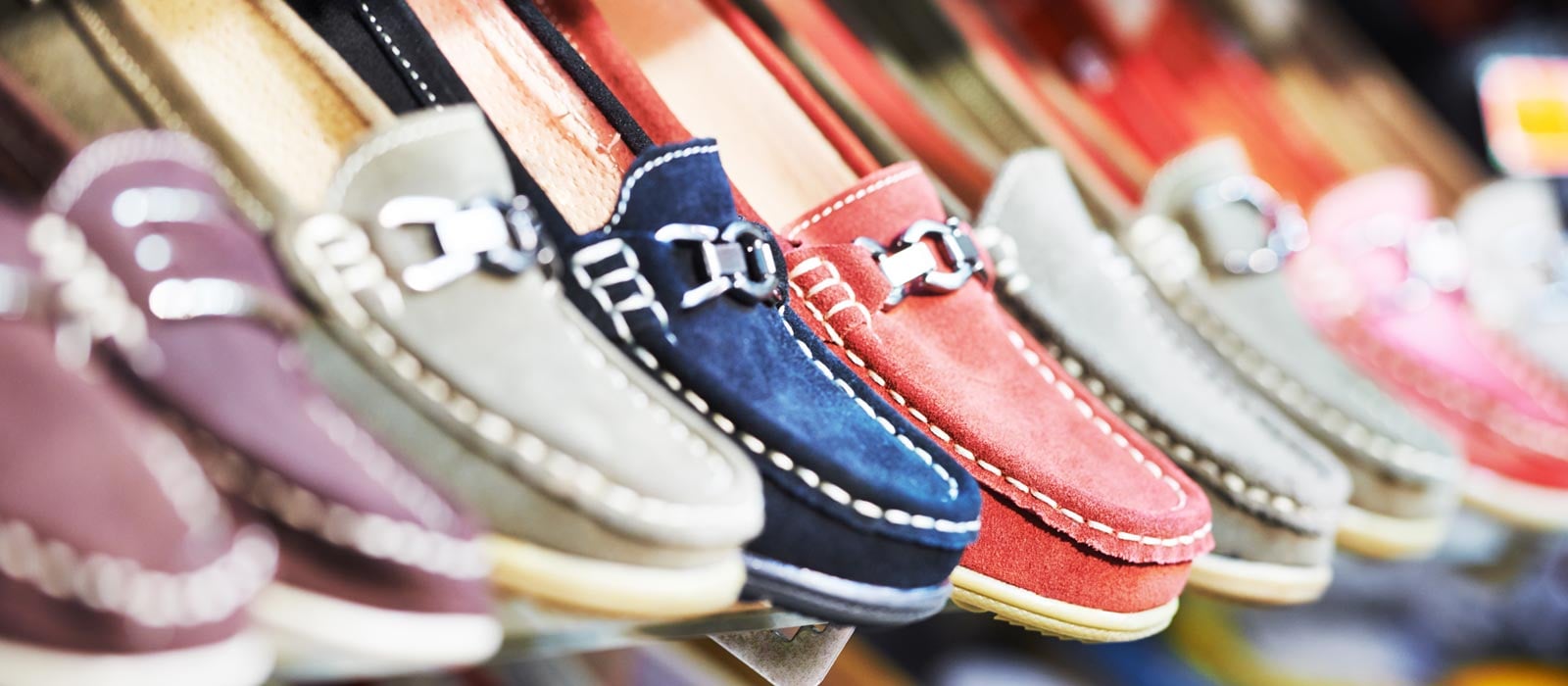
Most of the footwear sizes provided by manufacturers are pretty accurate. When a shoe fits correctly according to the manufacturer’s sizing, we call this “true to size.” Most of the footwear we sell fits true to size. However, occasionally footwear from a certain production run can be a little too small or too large. When this happens, we may notice a higher return rate for that pair of shoes, or we may notice that reviewers are commenting on a shoe being too big or too small. When this happens, we pull samples of that shoe in a variety of sizes from our warehouse to check the sizing accuracy. If we determine that the manufacturer’s sizing is inaccurate, we’ll make a “size note.” We may also test the fit of new shoes from a manufacturer that has frequently had off sizing in the past.
Footwear Size Notes
If our product evaluators determine that a particular model of shoe runs too small or too large, we’ll add a size note near the bottom of the product description page. A size note may tell customers to choose a slightly larger or smaller size compared to their actual shoe size. For example, if we add a note that says "Runs small, order 1/2 size larger," we’ve determined that ordering half a size larger will provide a more accurate fit. The image below shows what a size note looks like on our website:
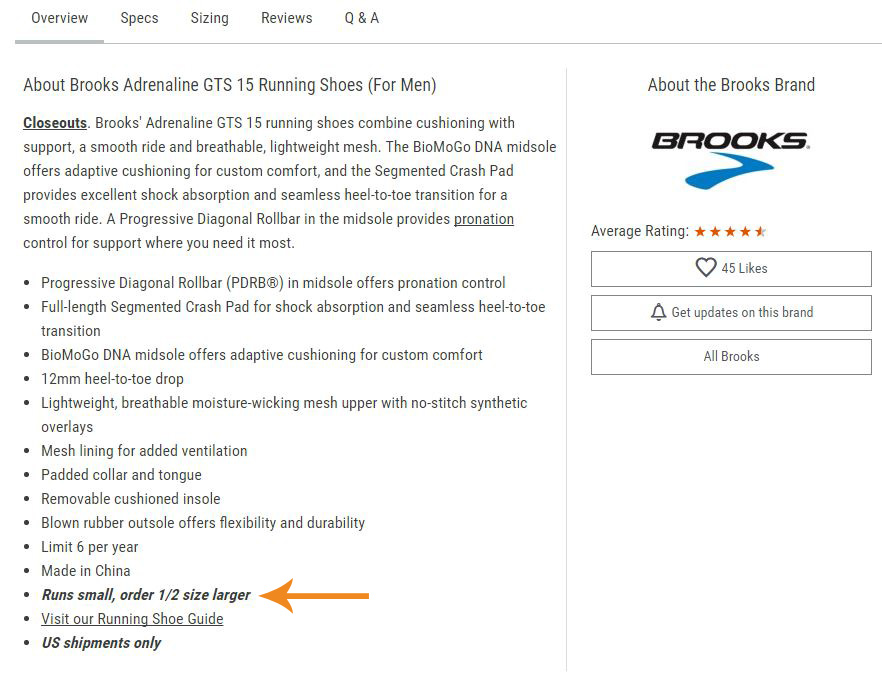
-
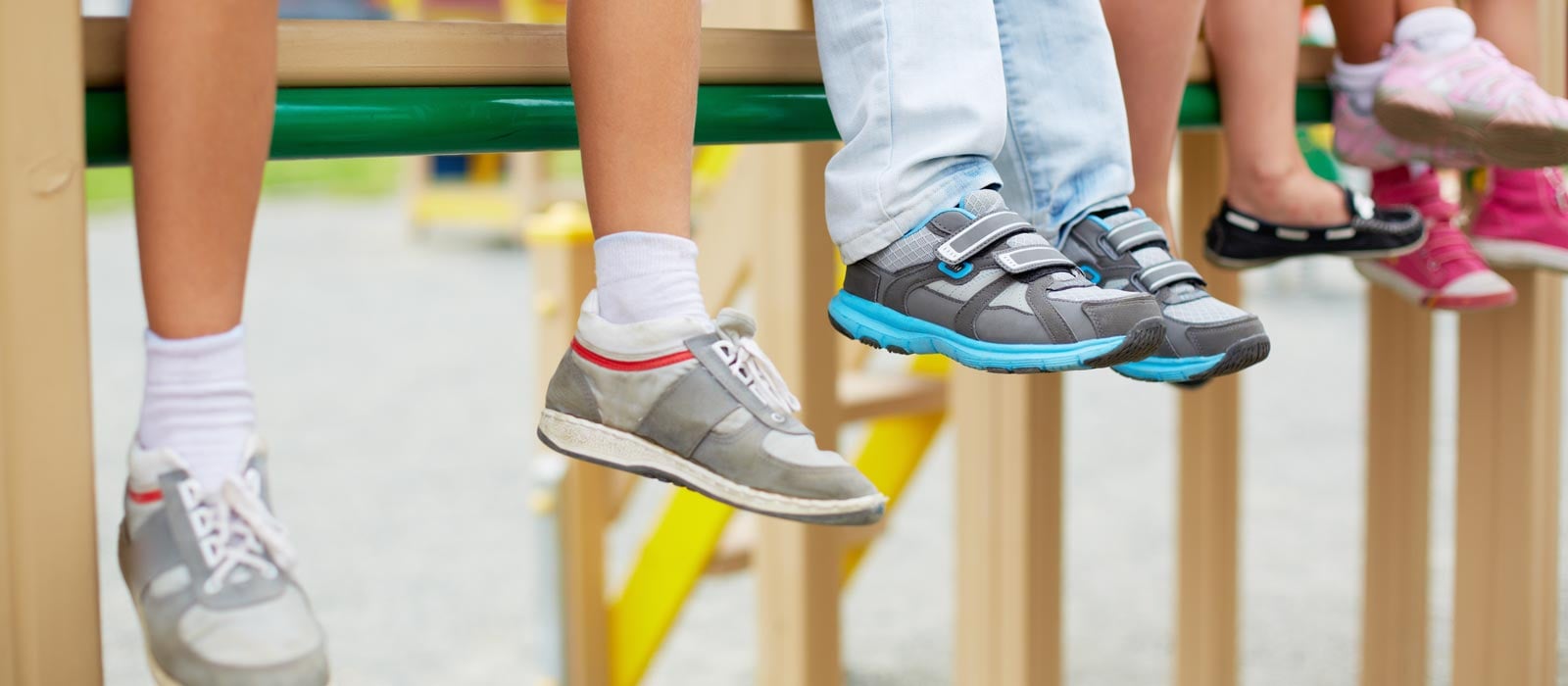
As we already mentioned, it’s a good idea to measure your child’s feet often to get the most accurate shoe size as your child grows. Children’s feet can increase in size very quickly, especially if your child is experiencing a growth spurt. Kids’ shoe sizing can sometimes be a little confusing because older children will eventually graduate to adult sizes at some point. This often happens between ages four and eight. In other words, baby shoes begin at size zero and continue until about size four. Most toddlers’ shoes start around size four and continue through about size 12. Children’s shoe sizes typically stop at size 13.5. Beyond that, the scale switches to adult sizes, beginning with size one and continuing to about an adult size seven. To see size conversions for children’s footwear, check out the charts below. These charts show how we split up baby, toddler, little kid and big kid sizes.
Baby Shoe Size Chart (0-12 Months)*
US Sizes Euro Sizes UK Sizes Inches CM 0 15 0 3 1/8 7.9 0.5 16 0.5 3 1/4 8.3 1 16 0.5 3 1/2 8.9 1.5 17 1 3 5/8 9.2 2 17 1 3 3/4 9.5 2.5 18 1.5 4 10.2 3 18 2 4 1/8 10.5 3.5 19 2.5 4 1/4 10.8 4 19 3 4 1/2 11.4 Toddler Shoe Size Chart (1-4 Years)*
US Sizes Euro Sizes UK Sizes Inches CM 4.5 20 3.5 4 5/8 11.7 5 20 4 4 3/4 12.1 5.5 21 4.5 5 12.7 6 22 5 5 1/8 13 6.5 22 5.5 5 1/4 13.3 7 23 6 5 1/2 14 7.5 24 6.5 5 5/8 14.3 8 24 7 5 3/4 14.6 8.5 25 7.5 6 15.2 9 25 8 6 1/8 15.6 9.5 26 8.5 6 1/4 15.9 10 27 9 6 1/2 16.5 10.5 27 9.5 6 5/8 16.8 11 28 10 6 3/4 17.1 11.5 29 10.5 7 17.8 12 30 11 7 1/8 18.1 Little Kid Shoe Size Chart (4-8 Years)*
US Sizes Euro Sizes UK Sizes Inches CM 12.5 30 11.5 7 1/4 18.4 13 31 12 7 1/2 19.1 13.5 31 12.5 7 5/8 19.4 1 32 13 7 3/4 19.7 1.5 33 13.5 8 20.3 2 33 1 8 1/8 20.6 2.5 34 1.5 8 1/4 21 3 34 2 8 1/2 21.6 Big Kid Shoe Size Chart (8-12 Years)*
US Sizes Euro Sizes UK Sizes Inches CM 3.5 35 2.5 8 5/8 21.9 4 36 3 8 3/4 22.2 4.5 36 3.5 9 22.9 5 37 4 9 1/8 23.2 5.5 37 4.5 9 1/4 23.5 6 38 5 9 1/2 24.1 6.5 38 5.5 9 5/8 24.4 7 39 6 9 3/4 24.8 *Note: These charts are for general reference only. Age and size ranges may vary. Shoe size conversions may vary slightly by manufacturer. Items may not be available in all sizes. Measurements in inches and centimeters refer to heel-to-toe length.
-
Looking for information on converting from US sizes to UK sizes or Euro sizes? There are two ways to do this on our website:
1) Check to see if there is a brand-specific size conversion chart available on the product page. This chart (if there is one available) will be located on the sizing tab (see image below).
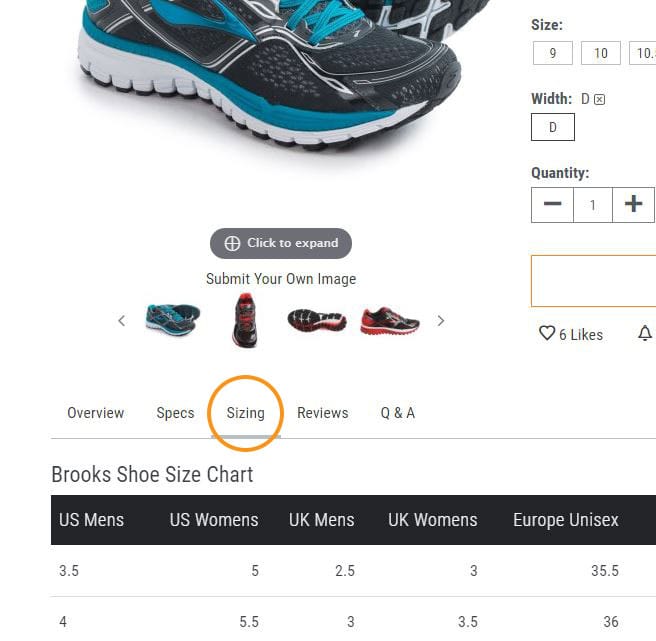
2) If a sizing chart is not available, this tab will not be displayed. In that case, take a look at the generic size conversion charts below. Just keep in mind that these generic charts are intended as a general reference only. Foreign-to-US size conversions may vary slightly by manufacturer. If a brand-specific chart is available, always use that first.
Men's Shoe Size Conversion Chart
US Sizes Euro Sizes UK Sizes Inches CM 6 39 5.5 9.25 23.5 6.5 39 6 9.5 24.1 7 40 6.5 9.625 24.4 7.5 40-41 7 9.75 24.8 8 41 7.5 9.9375 25.4 8.5 41-42 8 10.125 25.7 9 42 8.5 10.25 26 9.5 42-43 9 10.4375 26.7 10 43 9.5 10.5625 27 10.5 43-44 10 10.75 27.3 11 44 10.5 10.9375 27.9 11.5 44-45 11 11.125 28.3 12 45 11.5 11.25 28.6 13 46 12.5 11.5625 29.4 14 47 13.5 11.875 30.2 15 48 14.5 12.1875 31 16 49 15.5 12.5 31.8 Women's Shoe Size Conversion Chart
US Sizes Euro Sizes UK Sizes Inches CM 4 35 2 8.1875 20.8 4.5 35 2.5 8.375 21.3 5 35-36 3 8.5 21.6 5.5 36 3.5 8.75 22.2 6 36-37 4 8.875 22.5 6.5 37 4.5 9.0625 23 7 37-38 5 9.25 23.5 7.5 38 5.5 9.375 23.8 8 38-39 6 9.5 24.1 8.5 39 6.5 9.6875 24.6 9 39-40 7 9.875 25.1 9.5 40 7.5 10 25.4 10 40-41 8 10.1875 25.9 10.5 41 8.5 10.3125 26.2 11 41-42 9 10.5 26.7 11.5 42 9.5 10.6875 27.1 12 42-43 10 10.875 27.6 -
Higher letters indicate a wider width. For example, men’s foot widths typically range from A (narrowest) to 3E (widest). A width of D is about average (medium) for men's shoes. Women’s widths typically range from 3A (narrowest) to 2E (widest), with an average (medium) width of B.
Width Men's Sizing Women's Sizing AAA - Extra Extra Narrow AA - Extra Narrow A Extra Narrow Narrow B Narrow Medium (M) C Medium/Narrow Medium/Wide D Medium (M) Wide E Medium/Wide Extra Wide EE Wide Extra Extra Wide EEE Extra Wide - Note: This chart is intended as a general reference only. Exact widths may vary slightly by manufacturer.
-
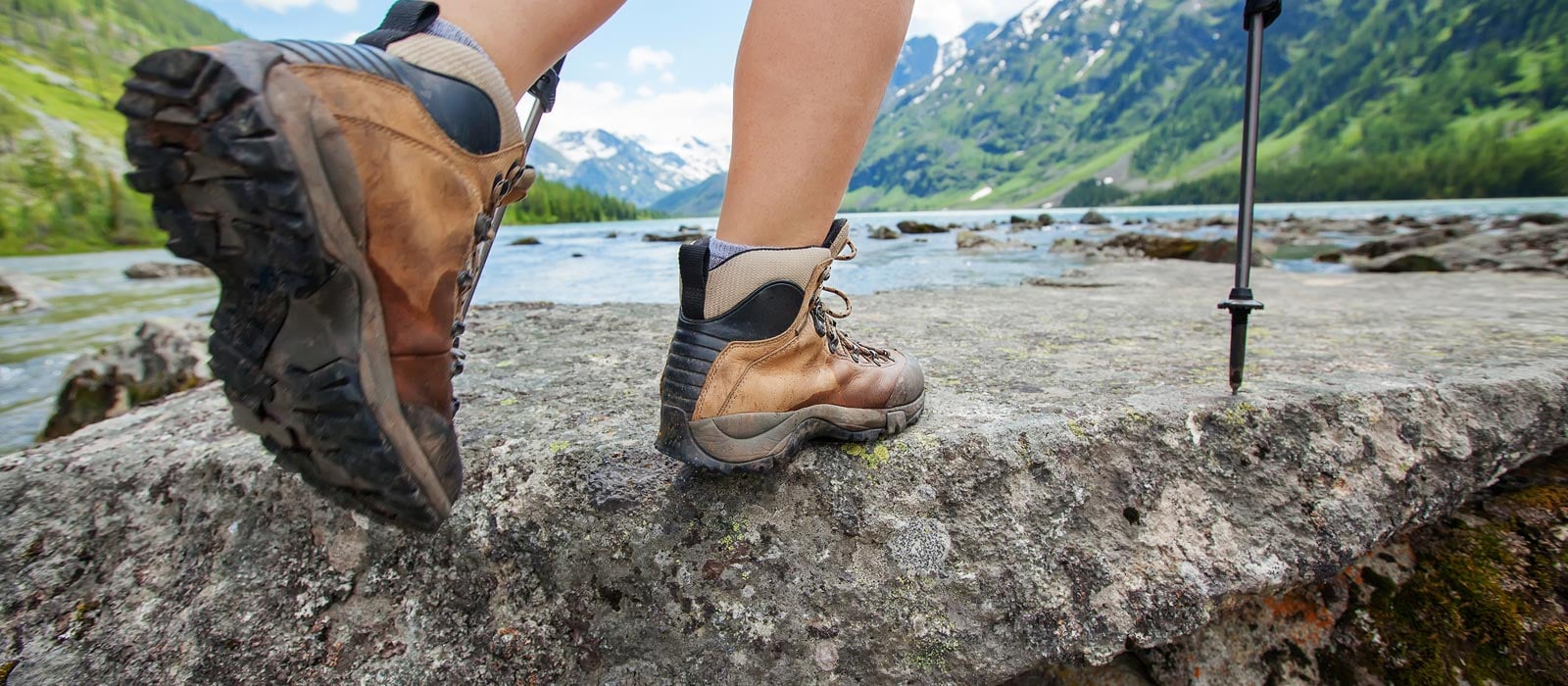
Despite the common belief that new shoes won't fit right until they've been "broken in," this is usually not the case. Most shoes should actually fit quite comfortably out of the box. If you try on a pair of shoes for the first time and immediately experience discomfort as you’re walking around, odds are you’ve ordered the wrong size or you’ve chosen a width that is incompatible with your feet.
Sneakers, casual shoes, dress shoes, sandals and most casual boots should all feel pretty comfortable out of the box. Only heavy-duty hiking boots, mountaineering boots and heavy leather boots should require break-in time, and that time should be fairly minimal. For example, if you’ve gone on several short hikes (2-5 miles) in a pair of new hiking boots and they still feel uncomfortable, there’s a good chance they will never feel right. Heavy-duty, all-leather boots typically have the longest break-in time compared to boots made of other materials. Of course, boots made of heavy-duty leather also tend to last much longer.
Shoe Fit Tips
- Be aware that one of your feet may be slightly smaller or larger than the other. This is more common than many people realize. Always choose your shoe size based on your largest foot. If one foot is a size 9 and the other is a size 9.5, go with a 9.5 shoe. If a shoe only comes in whole sizes, it’s often best to go with the next whole size larger (in this case a size 10).
- To prevent bruised toenails and blisters, you may want to go up half a size for running shoes and hiking boots. Check out our Running Shoe Guide and Hiking Footwear Guide for more detailed information.
- Consider trying a different lacing method if you have a narrow heel, extra-high arch, etc. (See diagrams in the next section).